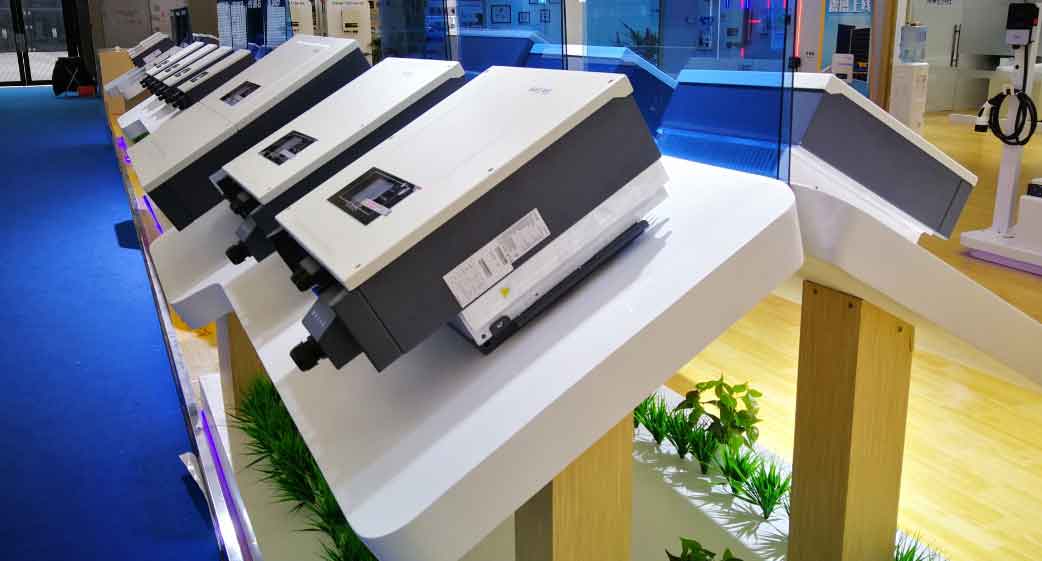
Creating a comprehensive guide for energy storage inverter involves detailing the types, functionalities, selection criteria, installation guidelines, and maintenance tips for these devices. Here’s a structured outline to help you understand each of these aspects:
1. Introduction to Energy Storage Inverter
- Definition and Purpose: Explain what energy storage inverter is and their role in energy systems.
- Importance in Renewable Energy: Discuss their significance in integrating renewable energy sources like solar and wind into the grid.
2. Types of Energy Storage Inverter
- Grid-Tied Inverters: Used for systems connected to the utility grid.
- Off-Grid Inverters: Used in isolated systems where no grid is available.
- Hybrid Inverters: Combine features of both grid-tied and off-grid systems.
- Multimode Inverters: Capable of operating in multiple modes depending on grid conditions.
3. Key Features to Consider
- Power Rating: The maximum output power capacity.
- Efficiency: How effectively energy storage inverter converts DC to AC.
- Battery Compatibility: Types of batteries supported (e.g., lithium-ion, lead-acid).
- Communication Features: Ability to communicate with other components in the energy system.
4. Selection Criteria
- System Requirements: Determining the power needs and compatibility with existing systems.
- Budget Considerations: Cost vs. performance and long-term savings.
- Brand and Warranty: Importance of choosing reliable brands and understanding warranty offerings.
5. Installation Guidelines
- Site Assessment: Evaluating the location for installation (space, environment, accessibility).
- Installation Process: Step-by-step guide on how to install energy storage inverter.
- Safety Measures: Safety protocols to follow during installation.
6. Maintenance and Troubleshooting
- Regular Maintenance: Routine checks and maintenance tasks to ensure optimal performance.
- Troubleshooting Common Issues: Common problems and how to fix them.
- Professional Support: When to call a professional for help.
7. Future Trends and Innovations
- Technological Advances: Upcoming technologies in energy storage inverter design and functionality.
- Regulatory Changes: How changes in policies might affect energy storage inverter use and integration.
8. Case Studies
- Real-world Applications: Examples of different setups and how they benefit from specific types of energy storage inverter.
- Customer Testimonials: Insights from users regarding their experiences with various products.
9. Conclusion
- Recap of Key Points: Summarize the most important aspects covered in the guide.
- Further Reading and Resources: Direct readers to additional information and resources.
10. Appendix
- Glossary of Terms: Definitions of technical terms used in the guide.
- FAQ Section: Answers to commonly asked questions about energy storage inverter.
11. Selection of Inverter Based on Specific Applications
- Residential: Criteria for choosing energy storage inverter for home energy systems, focusing on safety, ease of use, and efficiency.
- Commercial: Requirements for larger scale systems, including the ability to handle high loads and connectivity features for system monitoring.
- Industrial: Emphasis on durability, robustness, and extended warranty options due to the harsh conditions and continuous operation.
12. Software and Control Systems
- Software Integration: How energy storage inverter integrate with home or building management systems for smarter energy use.
- Remote Monitoring: Technologies that allow owners to track energy consumption and energy storage inverter performance from a distance.
- Upgradability: Importance of choosing energy storage inverter that can be updated with new software as technologies and standards evolve.
13. Environmental Impact and Sustainability
- Eco-Friendly Materials: Use of sustainable materials in manufacturing energy storage inverter.
- Energy Efficiency Programs: Participation in programs that promote energy savings and lower carbon footprints.
- Recycling and Disposal: Guidelines on how to properly dispose of energy storage inverter at the end of their lifecycle to minimize environmental impact.
14. Financing and Incentives
- Government Rebates: Information on local and national incentives that can help offset the initial cost of purchasing energy storage inverter.
- Financing Options: Various financing models available for different types of users (e.g., leasing, loans, and grants).
- ROI Analysis: Help users understand the return on investment and payback period calculations.
15. Safety Standards and Certifications
- Local Regulations: Overview of the electrical standards and building codes relevant to energy storage inverter installation.
- Certification Bodies: Explanation of certifications like UL, CE, and others that energy storage inverter might need to comply with for safety and reliability.
- Safety Best Practices: Tips and guidelines to ensure the safe operation of energy storage inverter in any environment.
16. Expert Insights
- Interviews with Industry Leaders: Insights from manufacturers and experts on the future of energy storage technology.
- Research and Development Focus: Information on what companies are focusing on to improve energy storage inverter technology.
- Challenges and Solutions: Discussion of current challenges in the industry and innovative solutions being developed.
17. User Reviews and Feedback
- Comparative Analysis: Compare user ratings and reviews of popular energy storage inverter models to help prospective buyers make informed choices.
- Testimonials: Real-life stories from users detailing their experiences with specific energy storage inverter brands and models.
- Feedback Loops: How companies use customer feedback to improve their products.
18. Conclusions and Recommendations
- Final Thoughts: Summarize the importance of choosing the right energy storage inverter based on individual needs and the potential long-term benefits.
- Buying Guide: Provide a checklist or decision-making tool that helps users select the best energy storage inverter.
- Future Outlook: Discuss the future of energy storage and how it might affect energy storage inverter technology and market trends.
This comprehensive guide is designed to cover every aspect of energy storage inverter, providing valuable information to both new buyers and experienced users looking to upgrade or expand their systems. Whether you are a homeowner, business owner, or industry professional, understanding these elements will help you make the best investment in your energy future.
